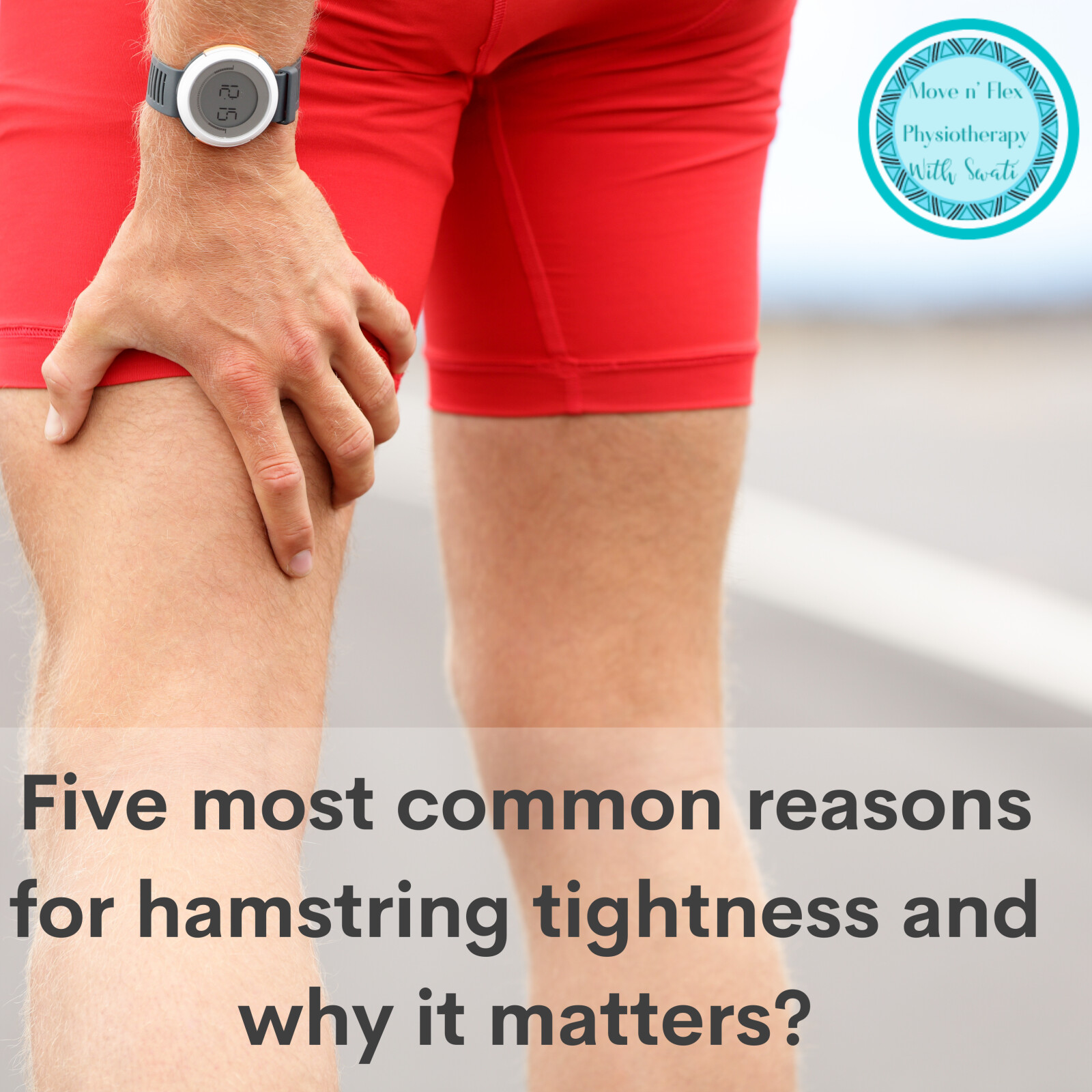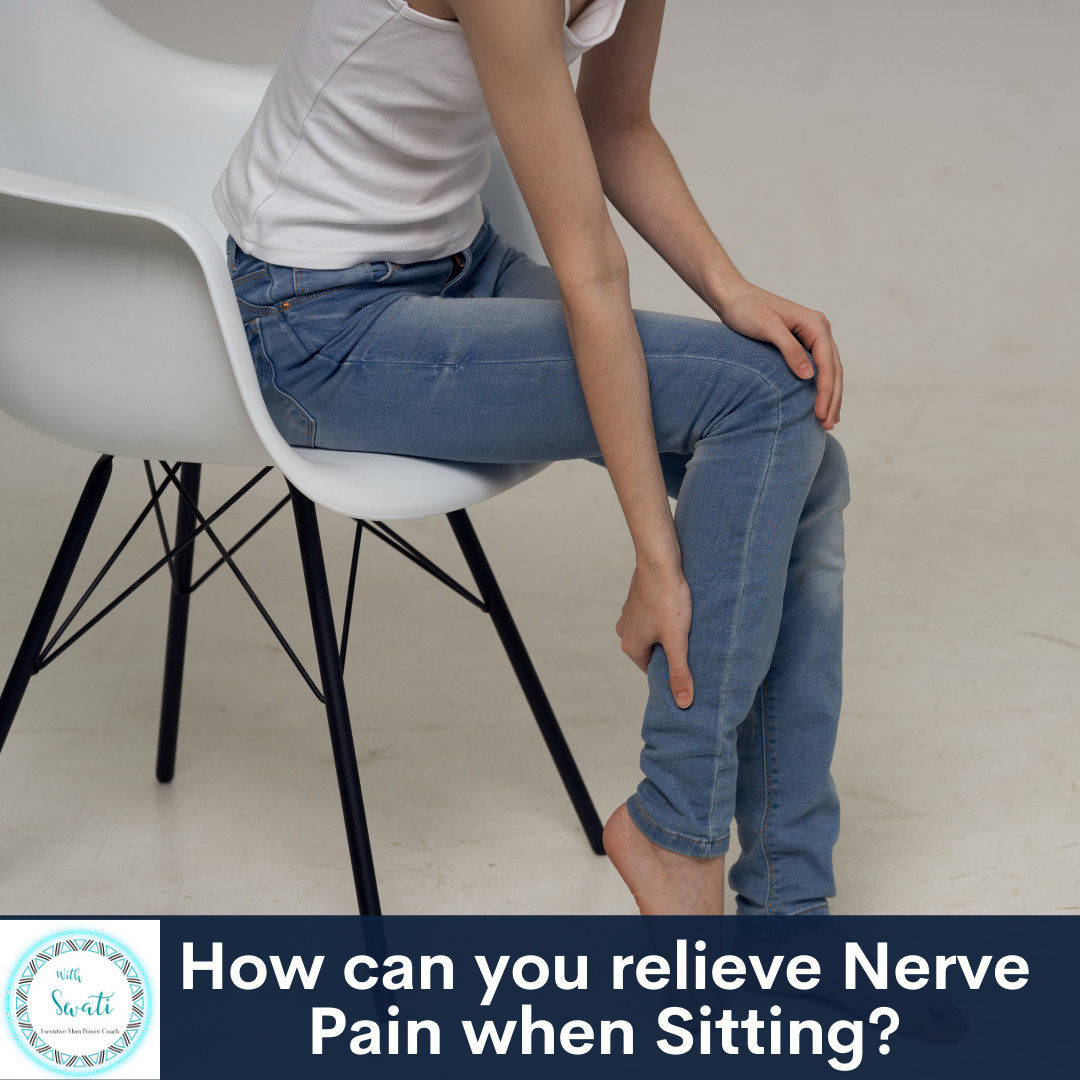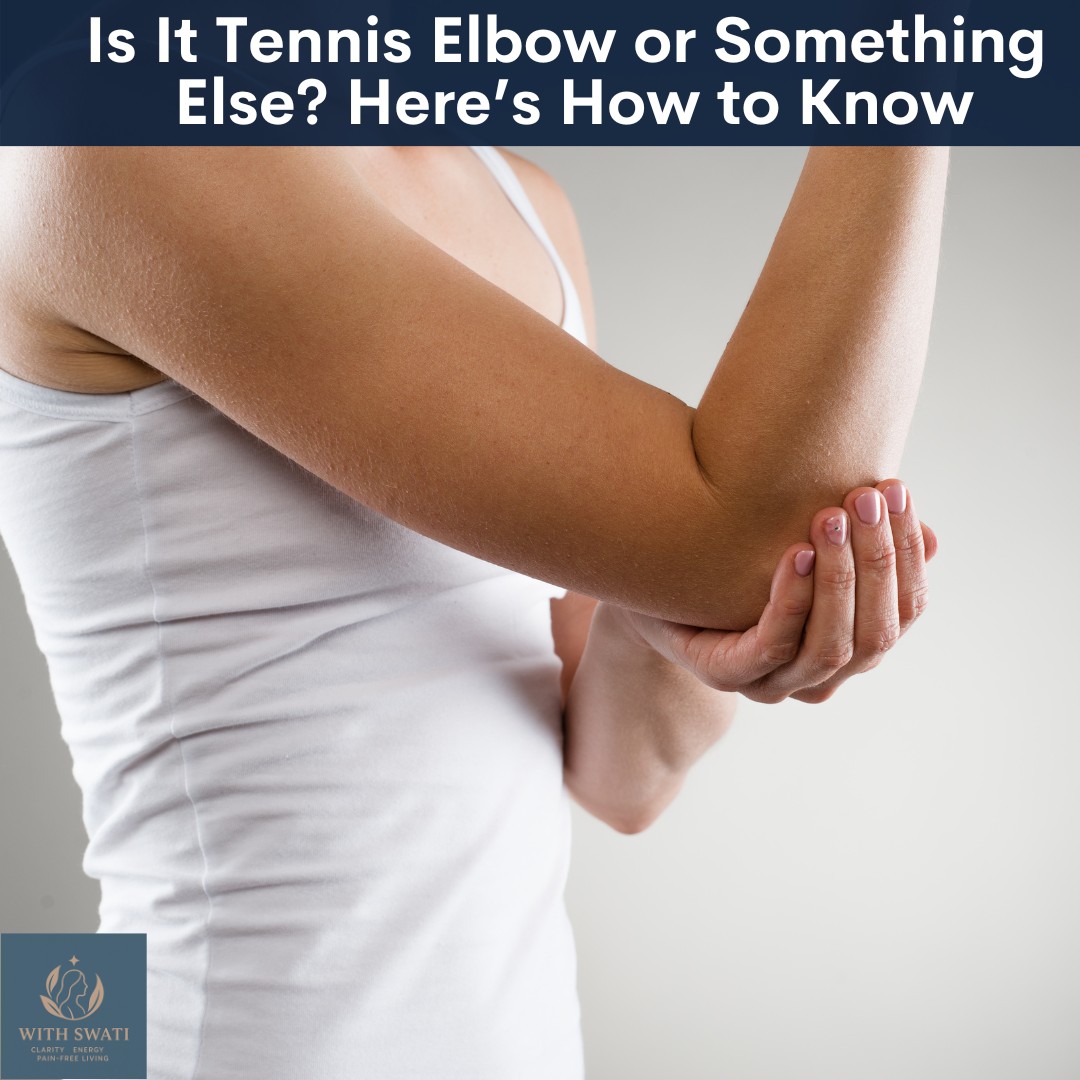
Hamstrings tightness is a common occurrence in the modern society with our sedentary lifestyles and long sitting hours. Most people associate hamstrings tightness with only the back of the thighs. However, tightness of the hamstrings can be a cause of your lower back or pelvic pain. The reason is that the hamstrings are attached to the ischial tuberosity, which are a bony area on the lower end of the pelvis. Interestingly, these are the bones that we sit on, thus they are also referred to as ‘sit bones’. Due to this connection when the hamstrings are tight, they tilt the pelvis into a backward direction which in turn flexes the lumbar spine forwards. This can then negatively affect the alignment of the spine, leading to lower back or pelvic pain. So it is very important to sort out the tightness in this muscle.
Now lets look at the five most common reasons for hamstring tightness:
#1. Sitting posture:
This is one of the most common, yet overlooked reason for hamstring tightness. People who sit with their knees bent at an angle either with the legs crossed or one leg tucked under the bottom keep their hamstrings in a shortened position for a prolonged period of time, thus adapting the muscle fibres to this shortened position, leading to hamstring tightness.
#2. Poor posture:
Hamstrings can get tight in certain posture deviations of the lumbar spine such as a lower cross syndrome. Here the abdominal and gluteal muscles are weak while the hip flexors and lower back paraspinal muscles along with the hamstrings are tight.
#3. Lack of warm up and cool down:
Most of us know the importance of warm up and cool down before and after exercises. However the majority of people skip these two vital steps, leading to tightness in muscles and post workout soreness. Tightness are more common in the major muscles groups including the hamstrings.
#4. Low back pain with sciatic nerve involvement:
The sciatic nerve supplies the back of the thigh and calf muscle. When there is irritation or compression of this nerve it can give rise to tightness of the hamstrings.
#5. Compensation for other muscles:
Hamstrings can get tight as a compensation to weak gluteal muscles, in order to maintain a balance in the area.
There are many ways to manage hamstring tightness. The easiest is regular stretching of the muscle. You can also work on reducing the tightness in your hamstrings by deep tissue massage, hot pack, cold packs, dry needling, foam rolling, flossing, postural correction, good ergonomic desk and chairset up and avoiding all the factors mentioned above, that can predispose you to tight hamstrings.
Learn more on how to manage your neck, back, joint and nerve pain in my free community HERE, where we discuss these topics in a judgement free and friendly manner.
If you like this blog and want to be notified about new blogs as soon as they are published, subscribe to my mailing list below.
I would love to see you around the internet! For other places you can explore more about me: https://withswati.com/page/link
Note: This page contains affiliate links which will bless me, at no additional cost to you and I will be able to help more people with spinal and joint pain.
















1 Comment